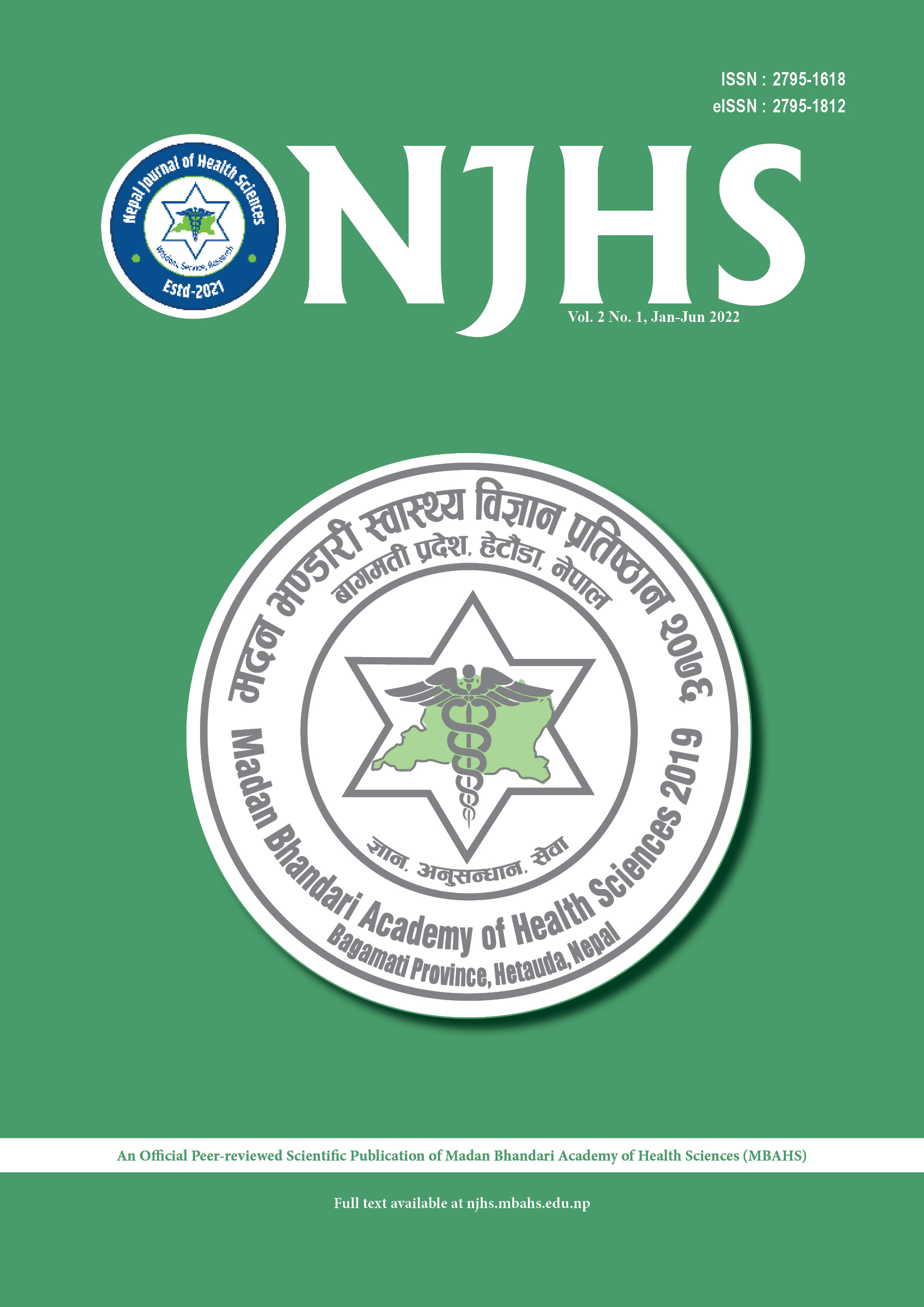Efficacy of Three Desensitizing Agents to Reduce Cervical Dentin Hypersensitivity: A Randomized Clinical Trial
DOI:
https://doi.org/10.3126/njhs.v2i1.47166Keywords:
Cervical abrasion, dentin hypersensitivity, desensitizing agent, numeric pain rating scaleAbstract
Introduction: Dentin hypersensitivity (DH) is a commonly encountered dental complaint, management of which is often challenging to dentists. It occurs when dentinal tubules are patent both at the pulpal and the oral surface. It is widely accepted that DH affects function and quality of life. Thus, it is necessary for dentists to manage it properly.
Objective: The objective of this study was to assess the efficacy of VivaSens and Propolis in comparison to Gluma in reducing cervical dentin hypersensitivity.
Methods: A randomized clinical trial, double-blinded, parallel-group study was conducted among forty-five patients. They were randomly allocated into three different groups (n=15): Gluma (positive control), VivaSens, and Propolis. Tactile and evaporative methods were used to assess pain using the Numeric Pain Rating Scale (NPRS) in patients with cervical abrasion, with a complaint of dentin hypersensitivity. Pain score was recorded preoperatively, immediately after application, at one week and one month postoperatively. Data were analyzed using SPSS version 11.5 and Microsoft Excel version 2010. Mean NPRS scores were calculated.
Results: All three desensitizing agents significantly reduced DH scores from baseline to all subsequent follow-ups (p<0.001). Kruskal–Wallis test elicited no significant differences in the mean difference in DH scores among positive control and test groups for both stimuli at all-time intervals (p < 0.05).
Conclusions: Gluma, VivaSens, and Propolis desensitizing agents were effective in relieving cervical DH. No statistically significant difference was found in relieving DH among the agents in all subsequent follow-ups.





